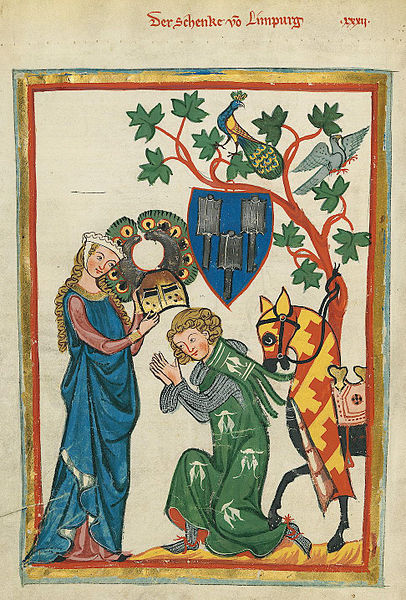The Peace and Truce of God was a movement in the Middle Ages led by the Catholic Church and was one of the most influential mass peace movements in history. The goal of both the Pax Dei and the Treuga Dei was to limit the violence of feuding in the western half of the former Carolingian Empire – following its collapse in the middle of the 9th century – using the threat of spiritual sanctions. The eastern half of the former Carolingian Empire did not experience the same collapse of central authority, and neither did England. This movement was also marked by popular participation, with many commoners supporting the movement as a solution to the famines, violence, and collapse of the social order around them.
Capital in the church of Revilla de Collazos depicting the Peace and Truce of God: two mounted knights aim to duel, but a woman holds them back by the reins.
Chivalry, or the chivalric language, is an informal and varying code of conduct developed in Europe between 1170 and 1220. It is associated with the medieval Christian institution of knighthood, with knights being members of various chivalric orders; knights' and gentlemen's behaviours were governed by chivalrous social codes. The ideals of chivalry were popularized in medieval literature, particularly the literary cycles known as the Matter of France, relating to the legendary companions of Charlemagne and his men-at-arms, the paladins, and the Matter of Britain, informed by Geoffrey of Monmouth's Historia Regum Britanniae, written in the 1130s, which popularized the legend of King Arthur and his knights of the Round Table.
Konrad von Limpurg as a knight being armed by his lady in the Codex Manesse (early 14th century)
God Speed by English artist Edmund Leighton, 1900: depicting an armoured knight departing for war and leaving his beloved
Reconstruction of a Roman cavalryman (eques)
Knights of Christ by Jan van Eyck





